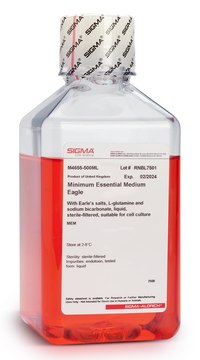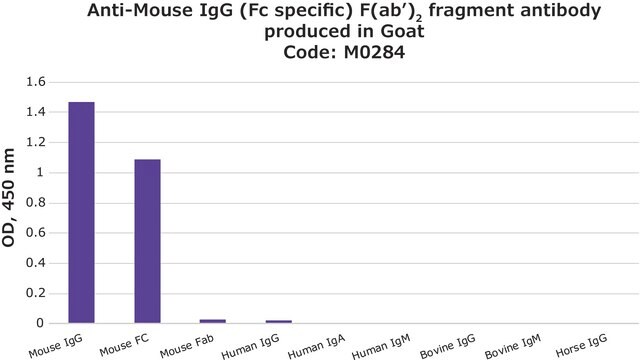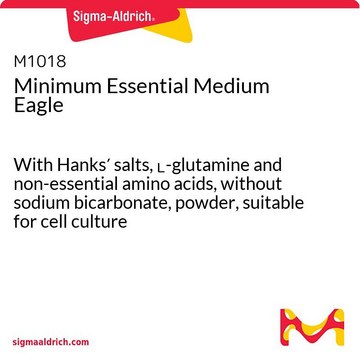M7278
Meio mínimo essencial de Eagle
HEPES modification, with Earle′s salts and sodium bicarbonate, without ʟ-glutamine, liquid, sterile-filtered, suitable for cell culture
Sinônimo(s):
MEM
About This Item
Produtos recomendados
Nome do produto
Meio mínimo essencial de Eagle, HEPES Modification, with Earle′s salts, 25 mM HEPES and sodium bicarbonate, without L-glutamine, liquid, sterile-filtered, suitable for cell culture
Nível de qualidade
esterilidade
sterile-filtered
Formulário
liquid
técnica(s)
cell culture | mammalian: suitable
Impurezas
endotoxin, tested
pH
>7.2
componentes
L-glutamine: no
phenol red: yes
HEPES: 25 mM
sodium pyruvate: no
Earle’s salts (5% CO2): yes
NaHCO3: yes
Condições de expedição
ambient
temperatura de armazenamento
2-8°C
Procurando produtos similares? Visita Guia de comparação de produtos
Descrição geral
Aplicação
Reconstituição
geralmente comprado junto com este produto
Código de classe de armazenamento
10 - Combustible liquids
Classe de risco de água (WGK)
WGK 1
Ponto de fulgor (°F)
Not applicable
Ponto de fulgor (°C)
Not applicable
Escolha uma das versões mais recentes:
Já possui este produto?
Encontre a documentação dos produtos que você adquiriu recentemente na biblioteca de documentos.
Os clientes também visualizaram
Nossa equipe de cientistas tem experiência em todas as áreas de pesquisa, incluindo Life Sciences, ciência de materiais, síntese química, cromatografia, química analítica e muitas outras.
Entre em contato com a assistência técnica






